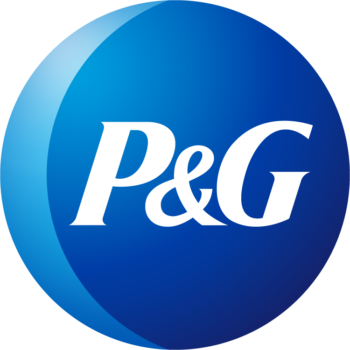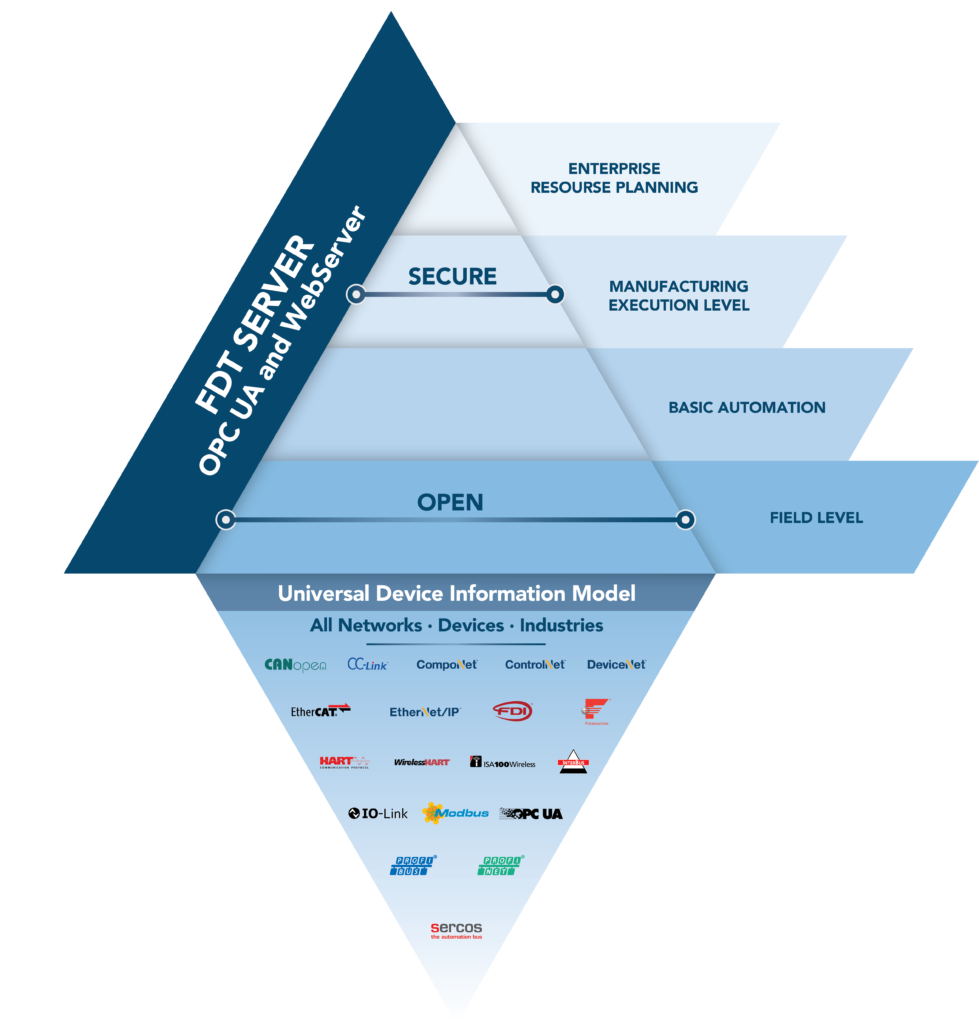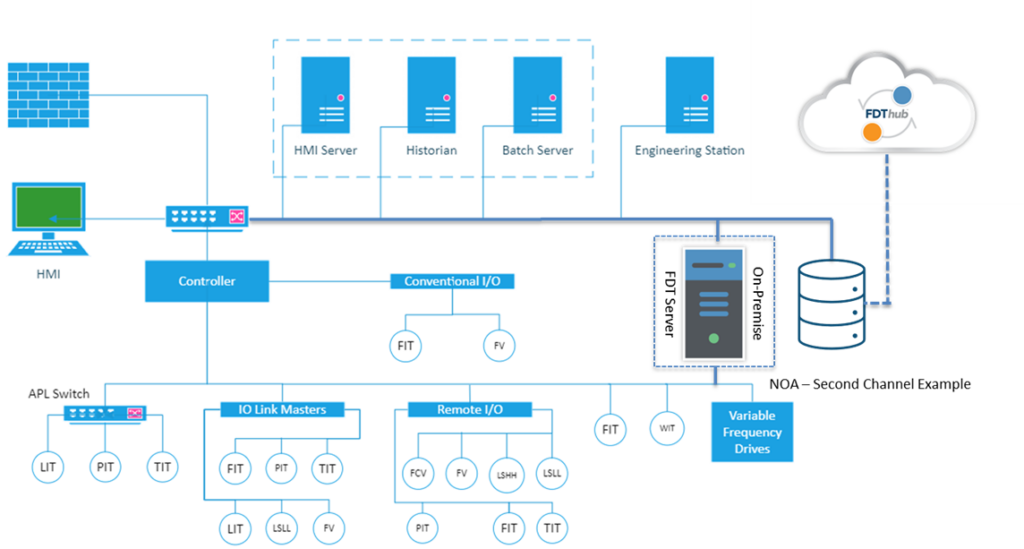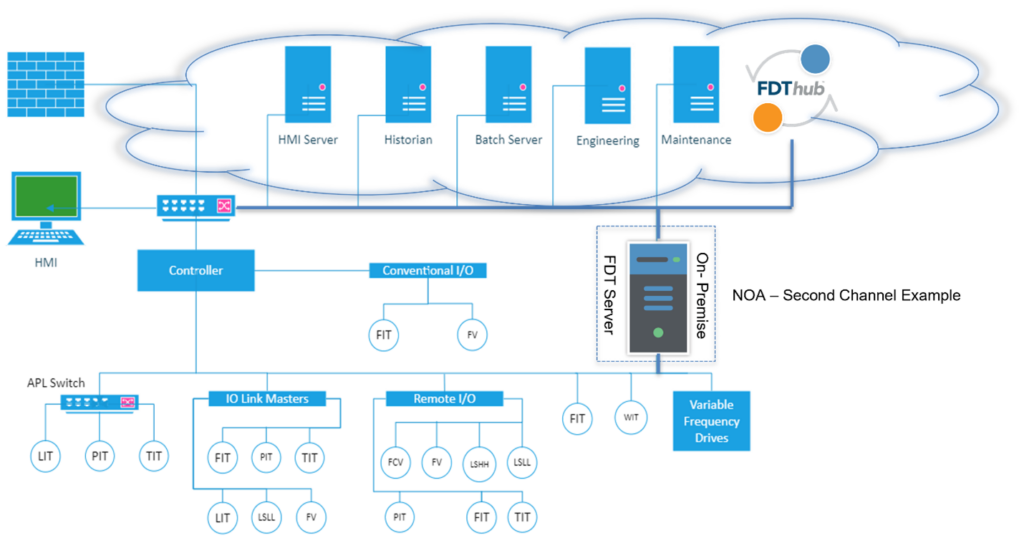
Consumer packaged goods (CPG) brands experienced intense growth during the pandemic. That high variability may remain for some time, according to McKinsey and Company, as consumers continue to make demands for more and different products.
Take-aways and lessons learned from that period continue to help companies like Procter & Gamble (P&G) navigate the future, including the ability to maintain and ramp up production to meet increases in demand.
The future is encapsulated in P&G’s Smart Process Cell (SPC), which recently tested Ethernet-Advanced Physical Layer (APL) to streamline networking, automation and process control. The slimmer Ethernet layer will modernize the hybrid skid supporting continuous and batch operations. It also will deliver better business decisions by connecting to the IT world focused on sharing diagnostic data from smarter devices to higher-level systems that need this data.

Figure 1: P&G’s Ethernet-APL demonstration project at the company’s Corporate Engineering Technology Lab (CETL) in West Chester, Ohio. This includes four tanks from 375 to 500 kg, six pumps with flowmeters, and three units performing continuous and batch operations. It runs water as its process fluid and is completely self-contained and remotely operated.
According to Paul Maurath, Ph.D., Technical Director, Process Automation, P&G, the coming new generation of “smarter” devices such as Coriolis flowmeters, pH transmitters, radar level gauges, pressure transmitters and even discrete devices on/off valves have more data to share – and more upper-level systems such as maintenance and data analytics want that information. Today end users face significant challenges integrating, managing, and monitoring these devices, which will hinder their adoption.
Reduce Lifecycle Complexity
For P&G today, conventional analog and discrete I/O dominate its architecture, which is highly distributed using an Ethernet backbone. Smarter devices using technologies like Ethernet/IP and IO-Link are joining these networks, adding both functionality and complexity.
In addition to improved networking strategies to take advantage of real-time diagnostic data, P&G wanted to improve device management and maintenance strategies to handle the lifecycle of all connected devices. From configuration to device replacement across networks, intelligent device management becomes a crucial factor in efficiently managing uptime and production.
What Do Users Need? Simplification
Paul’s ask of partners is simple but not easy: With smarter, more complex devices, including everything from I/O to flow meters, he says, “Help us manage complexity.”
From the ODVA and FDT Group General Assembly presentations, Paul compares the diversity of Logitech mouse options for Windows to a factory floor, with the tremendous variability of devices and features.
“When you replace a device like a mouse, what’s happening in the background that you might not think about? You are losing the connection to the old device and finding a new one. If it’s a simple wired two button mouse, that’s easy. But what if it’s a complex gaming mouse with 15 configurable buttons and you don’t have an exact replacement available? Can Windows find and install the right driver? What happens to all those configurable functions?”
The same can be said for replacing any device in a control system, like a pressure transmitter. If it’s a conventional 4-20mA device, it is straightforward, even including HART configuration. But what if it’s a smart device that uses Ethernet/IP or IO Link?
“The new product might look like the old product, depending on what you had in the storeroom, but once the application loses the initial connection and it must be reconfigured, this is where the problems can start.”
How does the new device communicate? Is its new configuration file available? Does the controller have to be restarted or reloaded to reach the new device? Is the data structure the same for the new device, or does the application code have to be changed? How long will it take to get these tasks done?
While these big questions loom, the line is down and the biggest unknown remains: how long until that line is back up and running?
“This initial communication configuration is a headache, and it could get worse going forward, when devices turn into smart devices, with more parameters and configuration variables,” Paul says. “To address this, we need help from suppliers and standard organizations around integration and compatibility.”
Solutions must include what’s needed to troubleshoot and repair a smart system and an easy way to replace devices to avoid delays of hours or even days.
Reduce Configuration Confusion
Anyone who has had to install, configure, replace or troubleshoot devices like a smart process transmitter can attest to how difficult the process can be. Does every device interface (and there can be several views) show the same information? If the answer is no, then it’s too easy for the user to unknowingly download and overwrite the configuration.
Today, there’s no easy way for controllers to upload configurations for field devices. Consequently, if a technician adds a filter to a device, a master controller may come along later and wipe out those changes. Who has the right configuration? And who has the master copy?
The options are enough to frustrate even the most experienced professionals. That’s why FDT is focused on streamlining the work.
FDT Device Lifecycle Management Solutions for Distributed Architectures
As a standards organization with 20 years dedicated to smart device integration and lifecycle management, FDT can provide open standardized solutions to help address P&G’s use case questions for lifecycle management of smarter devices. The solutions are adaptable to suit any networking topology including newer, streamlined Ethernet architectures.

Figure 2: The SPC Today migrated to include APL and added IO-Link to its EtherNet/IP architecture.
FDT is a globally adopted standard (IEC 62453) designed for the integration, configuration and monitoring of networks and devices for enterprise-wide connectivity in brownfield and greenfield applications. The FDT standard serves software-based hosting (desktop/FRAME or Server) environments and device (DTM) solutions that open and unite the architecture independent of the mixed network topology, device/type or vendor. The embedded FDT host (which acts like a device manager) environment runs communication to the connected devices via DTMs in the background much like a PC’s device manager would for peripheral devices like a mouse or printer. The end result: an open architecture giving the user freedom and flexibility to pick device/type/driver/vendor for their application, while providing a unified environment for device management. This simplifies intelligent device management, including design, integration, configuration, monitoring and replacement, for any connected device on the networks.
Specific to P&G’s upgraded brownfield application, an FDT Server can provide a distributed control environment to handle device/process lifecycle management via the second channel that is recommended by the International User Association of Automation Technology in Process Industries (NAMUR) Open Architecture (NOA) – specifically NOA-175.

Figure 3: FDT Server architecture based on NOA-175 recommendation for the second channel provides an open and secure connection to brownfield or greenfield architectures.
Two Solutions
There are two possible solutions to help solve intelligent device management complexity and protect the integrity of the installed base with modern ways to manage and monitor devices and data. Both are based on applying the FDT Server according to the NOA second channel solution.
Deploying the FDT Server on-premise gives the user direct access to field devices to gain real-time, OT data access, optimizing monitoring and maintenance practices via browsers or mobile devices. Additionally, the solution allows data mapping according to OPC UA information modeling so OT data can permeate the IT world (on-premise or cloud) allowing higher-level systems/clients, HMI server, historian, batch server, engineering and maintenance servers authenticated access. The optional FDThub™ (DTM repository), deployable in the cloud or on-premise, allows automatic device detection and configuration and is a valued service focused on maintaining device software drivers, updates and apps.
The FDThub assists the FDT Server with device replacement. In the event of adding newer, smarter or different devices, the FDThub connected to the FDT Server will auto-detect a new device on the network and notify the user to configure the device (offline if needed). The Server will remember the device’s old parameters, assuming that some parameters may cross over to the new device and implement new configuration parameters custom to that new device.

Figure 4: SPC Today shows a possible architecture to leverage the NOA second channel using the FDT Server on-premise with a local copy of the FDThub. The solution allows monitoring and optimization of all field devices via OT and IT clients with all services hosted on-premise.

Figure 5: SPC Future Networks and Architectures shows a possible architecture to leverage the NOA second channel using the FDT Server on-premise with online cloud access to the FDThub. The Solution allows monitoring and optimization of all field devices via OT and IT clients with all services hosted in the cloud.
The Answer Is In the Standard
FDT is the internationally recognized, widely deployed, universal integration standard that allows devices to connect and communicate by seamlessly integrating all industrial networks into one project view.
That’s important because future networks and architectures will only become more complicated with smarter and more capable devices. New technologies based on standards deliver elegant solutions built on functionality and simplicity, rather than imposing a technology burden. The solutions put the end users who will troubleshoot these systems front and center when creating and managing standards.
“Smart devices are complicating our world, so it’s critical for us to have standards that allow them to work with each other and our automation systems,” adds Paul. “The market will decide which standards succeed, but we still need simple, functional technologies that are easier to implement, maintain and migrate over time.”